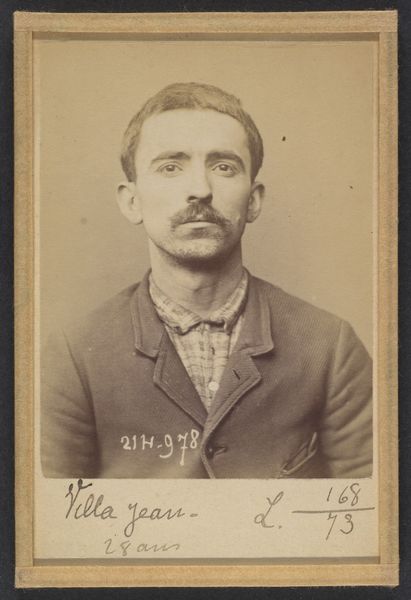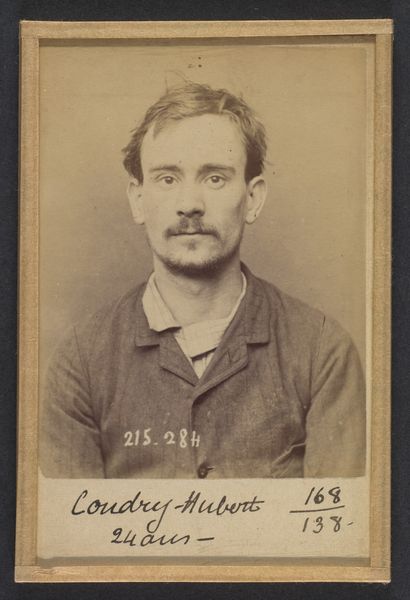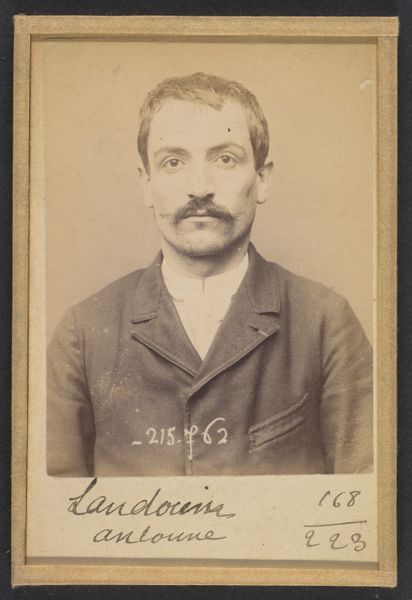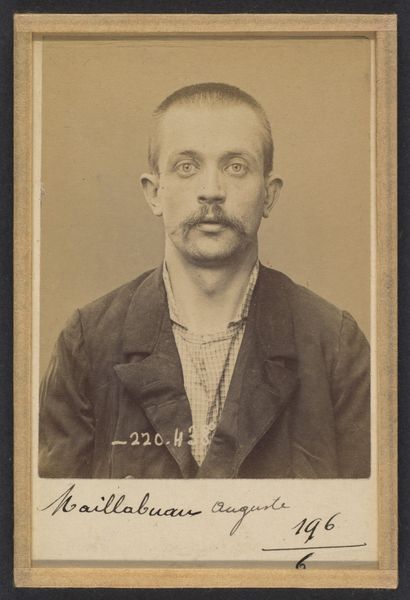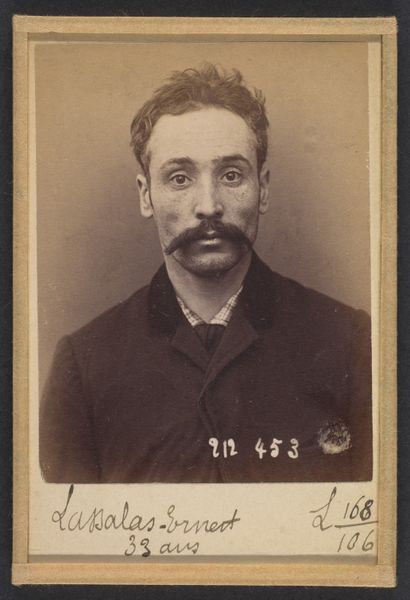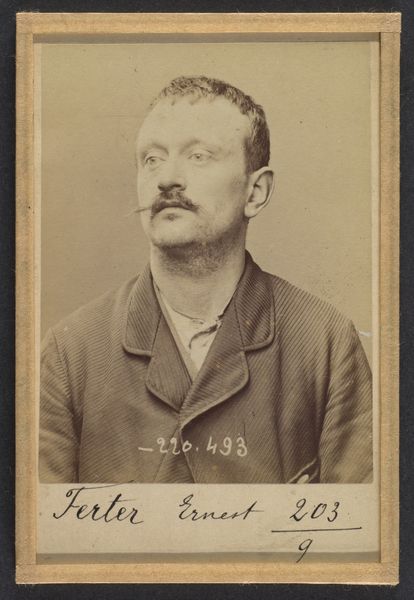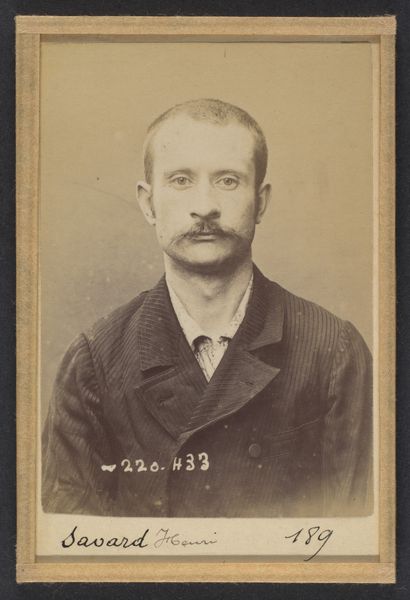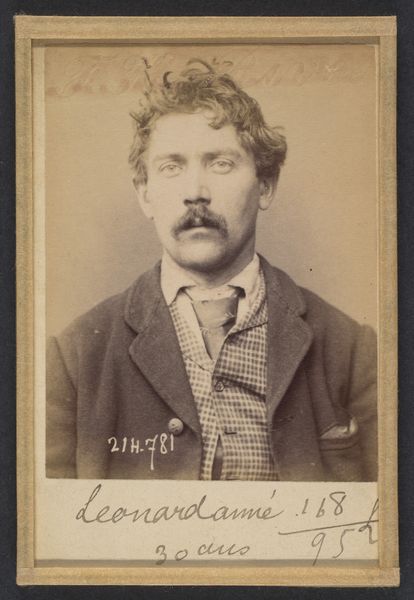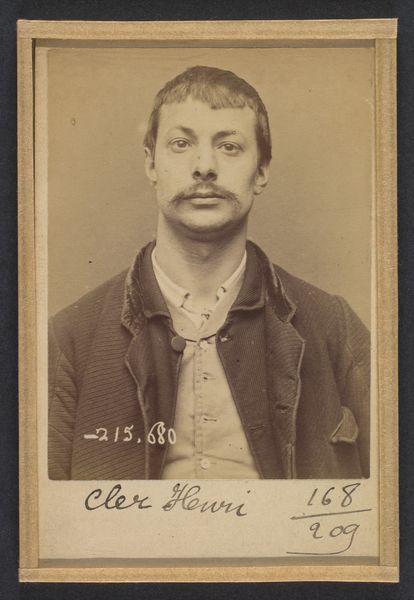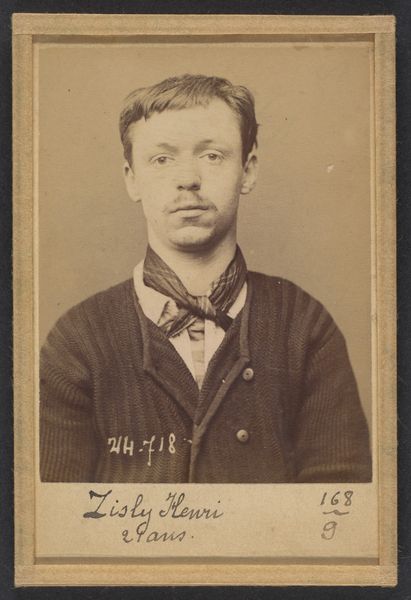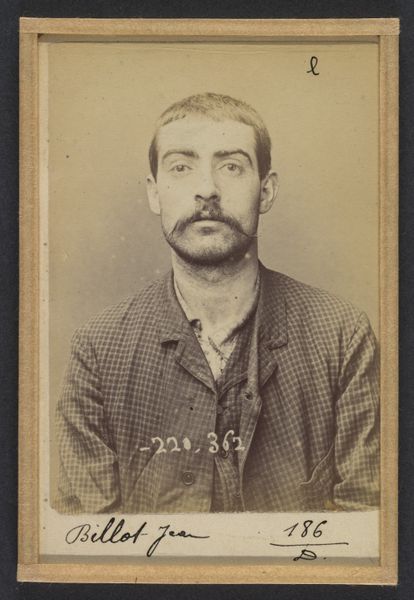
Charrié. Cyprien. 26 ans, né le 7/10/67 à Paris XVIlle. Imprimeur. Anarchiste 2/7/94. 1894
0:00
0:00
photography, gelatin-silver-print
#
portrait
#
portrait
#
photography
#
gelatin-silver-print
#
history-painting
#
realism
Dimensions: 10.5 x 7 x 0.5 cm (4 1/8 x 2 3/4 x 3/16 in.) each
Copyright: Public Domain
Editor: Here we have "Charrié. Cyprien. 26 ans, né le 7/10/67 à Paris XVIlle. Imprimeur. Anarchiste 2/7/94.", a gelatin silver print from 1894, attributed to Alphonse Bertillon, currently residing in the Metropolitan Museum of Art. The subject stares off into the distance; his expression is somewhat melancholy. What's your read on this particular work? Curator: For me, the power of this piece lies in its engagement with the means of production of knowledge. Bertillon was instrumental in developing photographic criminology. Think about it: Photography, a relatively new technology, being employed to categorize and control individuals. The very material of this print is implicated in a system of power, defining who is seen, known, and potentially, condemned by society. What does the "anarchiste" designation tell us about labor struggles in Paris at the time? Editor: So, it's less about the man himself and more about how photography was being utilized as a tool of the state? It’s a bit chilling, actually, to think about it that way. Curator: Exactly. Consider the act of printing itself. Charrié, the subject, was an "imprimeur," or printer. Both Bertillon and Charrié, in different ways, were involved in the act of reproduction. The former utilizing the new medium to reproduce images for the purposes of classification, and the other… presumably reproducing words, texts that had the potential to disseminate ideology. What power dynamics do you think this illuminates? Editor: That's a fascinating parallel. The establishment using printing to solidify power structures versus the potential of the printed word to subvert them... It certainly shifts my perspective. Curator: Indeed. Looking at the piece as a pure portrait diminishes its impact. It's the context of production – the social and technological forces – that truly make it resonate. Editor: I agree. I now see this image as less of an individual portrait, and more of a reflection of how societal power is exerted through material processes. Curator: Precisely. And understanding that expands our appreciation for how seemingly straightforward art can be a product of complex forces.
Comments
No comments
Be the first to comment and join the conversation on the ultimate creative platform.
